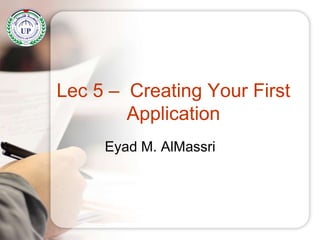The document provides instructions for creating and running a basic "Hello World" Android application in Android Studio. It discusses creating a new project with an activity, adding a layout file with XML, adding a button and handling button click events either within the activity or with a separate listener class. It also covers running the app in an Android emulator, including selecting a device, launching the emulator if needed, and interacting with the app within the emulator.

















































